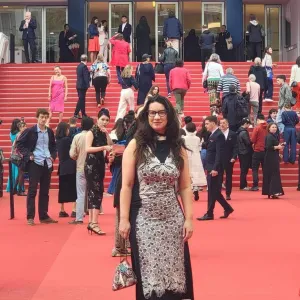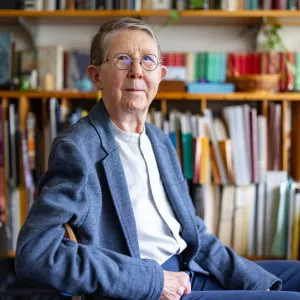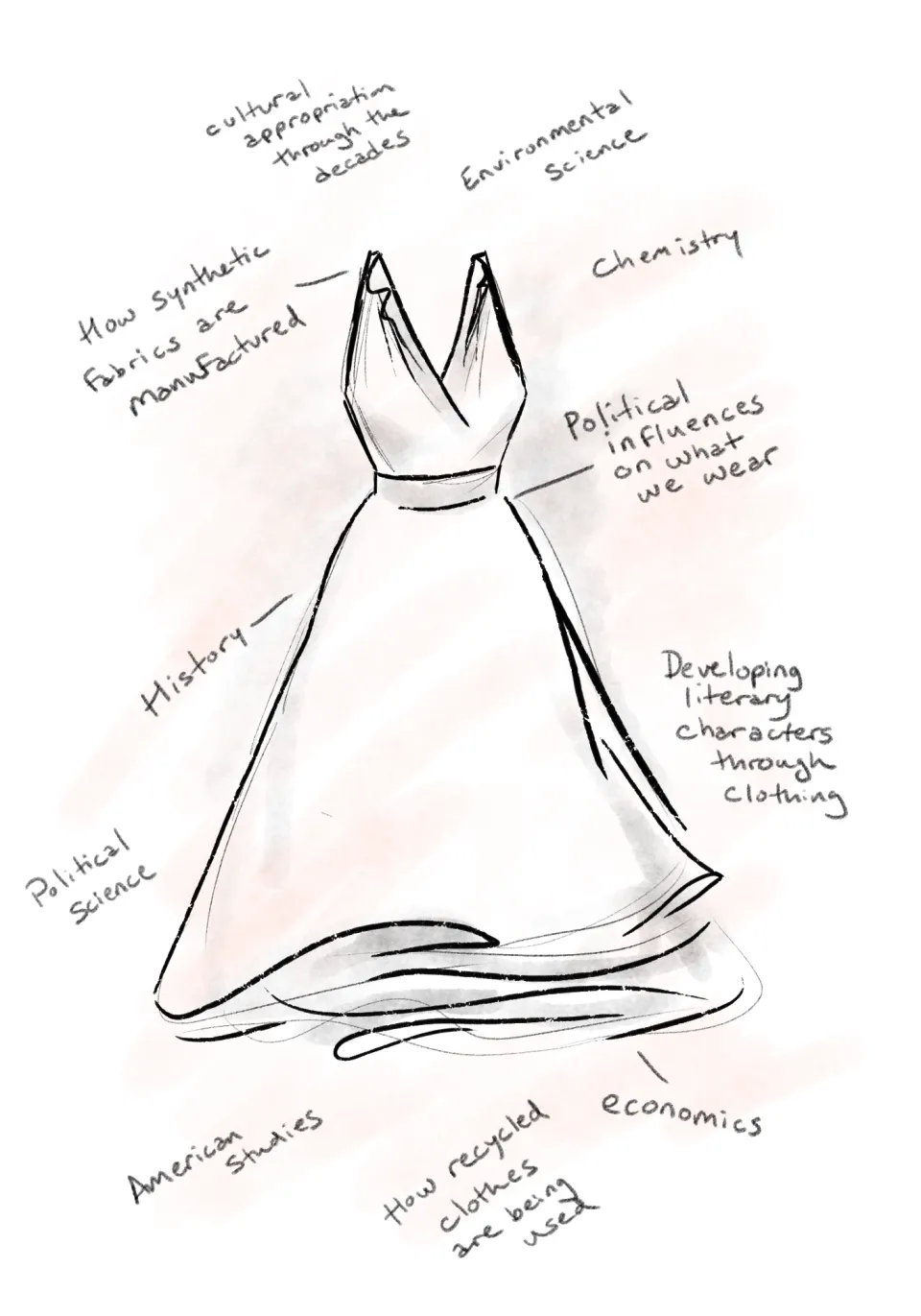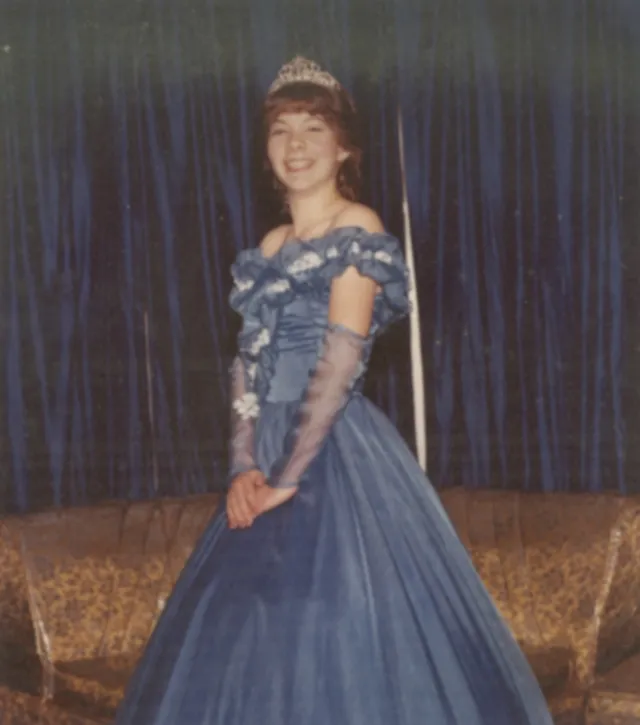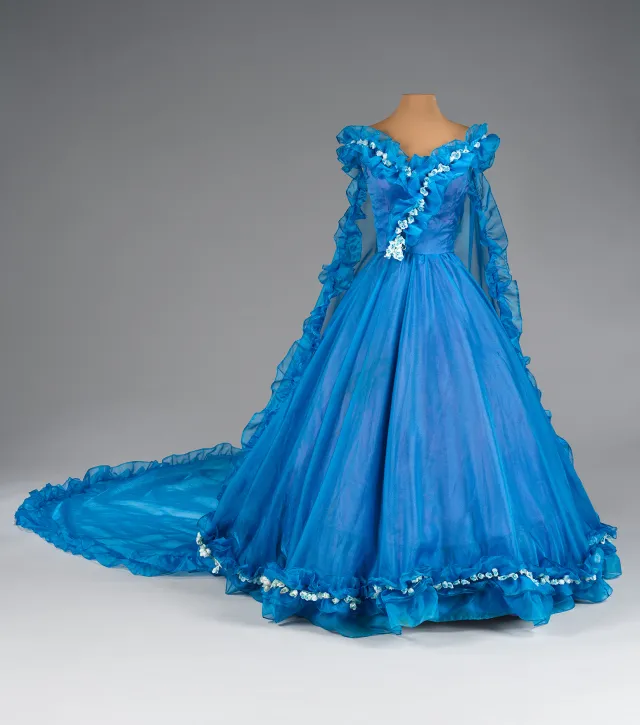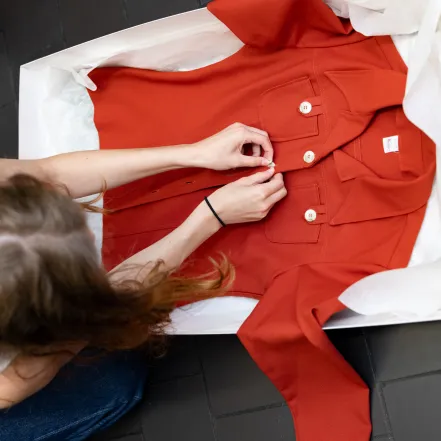What Students Can Learn From the Smith College Historic Clothing Collection
Research & Inquiry
Part three of “Women’s Clothes and the Stories They Tell” looks at the significance of the SCHCC as a teaching resource.
Alice Cozzi, Int.S. Dipl. ’17, credits the SCHCC with inspiring her business, Florence Fashion Tour, which provides excursions in Florence and Milan to see the highest-quality Italian fashion.
Published September 11, 2024
Part Three: Pedagogy
With the publication of Real Clothes, Real Lives by Kiki Smith ’71, and an exhibit at the New-York Historical Society set to debut next month, the Smith College Historic Clothing Collection is finally getting the recognition it deserves. This series chronicles what makes the collection unique, its pedagogical possibilities, its impact on Smith students and alums, and the laborious process of sharing the collection with the world.
When Kiki Smith ’71, professor of theatre, started the Smith College Historic Clothing Collection (SCHCC) in 1974, she saw it as a resource to use in her costume design courses.
But as the collection grew to include more than two centuries’ worth of women’s garments, she realized that its impact as a teaching tool could be far more significant. Perfectly aligned with Smith’s liberal arts mission, the SCHCC has been used in myriad ways across a variety of academic disciplines, including French literature, American studies, and STEM, while still only skimming the surface of possibilities. “For a costume designer, the collection is a luxury to have,” says Smith, “but the potential for its multidisciplinary academic use is huge.” Over the years, she has seen this firsthand, with chemistry students researching textile dyes, botany students studying the sources of silk and cotton, and economics students delving into the details and ramifications of importing and exporting. For the many students who have used the collection for research, coursework, and internships, the experience has often been a defining moment in their Smith education.
Lessons Learned
Theresa Miles ’18 is a costume coordinator/costume designer for the TV show The Equalizer whose recent credits include the miniseries Feud: Capote and the Women and the film Eileen. An anthropology and theatre major at Smith, she used costume design as a bridge between the two fields to study culture and design through a unique perspective. She led costume design teams for several Smith productions as a student and frequently used the collection to research historic designs and textiles. “Study collections like the historic dress collection are quite rare,” Miles says. “This was a very accessible collection for costume design students—and so valuable. It was just behind little gray doors, and you open them and you’re like, ‘Wow, we’re back in the 1890s.’”
Having access to such a unique collection—and being able to handle the garments—changed the way Alice Cozzi, Int.S. Dipl. ’17, ultimately thinks about fashion. “The experience taught me about the degree of attachment between us and clothes,” Cozzi says. “I also learned to appreciate how even a simple T-shirt is made or about different kinds of embroideries. It taught me about the production and the history of clothes and made me appreciate that we need quality and durability in the clothes we wear.”
Cozzi, a native of Florence, Italy, where she currently lives, credits her work with the collection for inspiring the creation of Florence Fashion Tour, a business that provides tours of shops in Florence and Milan that feature Italian-made clothing, leather goods, and jewelry and of the studios of local artisans—the antithesis of fast fashion. “We love Italian fashion. We think it’s unique and super-high quality,” Cozzi says. “When we show people how a leather bag is made in front of them, that’s a totally eye-opening experience, and they can appreciate it so much more. Having this knowledge and this experience is really empowering.”
Smith students are introduced to the SCHCC through costume design classes, theatre production work, internships, academics, and independent research. Besides studying design, textiles, and the clothing’s historical significance, students have repaired garments, cataloged the ever-increasing number of pieces in the collection, and, in general, helped to maintain its organization.
A key lesson for most alums who worked with the collection as students was learning how to collaborate with others from a wide range of disciplines. “The value of working with a team is maybe my biggest takeaway from my time working with the collection,” says Jennifer Loveman Manthei ’90, “and that you didn’t have to say, ‘I’m a theatre person’ or ‘I’m a math person,’ because [we were all there for the collection]; we just came from different perspectives. Getting someone else’s perspective always enhanced what I was doing.”
Manthei, an art major at Smith, worked for about 10 years at The Costume Institute at the Metropolitan Museum of Art in New York City, where, among other things, she curated exhibits before eventually transitioning into the operational side of museum work. Today, she is director of operations and chief liaison for the advancement division at the Museum of Science in Boston, where she creates development strategy, oversees a team of 25 frontline fundraisers, and serves as a liaison with the museum’s board of trustees. “Whatever I learned with the collection—for example, how to really observe or how to work with a team—those are skills and experiences that have stayed with me to this day,” she says. “My time at Smith, my time with Kiki, my time with the collection has had a huge impact on me and the way I look at the world and interact with people. I know that sounds kind of grandiose, but it’s true.”
Kiki Smith ’71, professor of theatre, speaks to students enrolled in a class called Consumer Culture and the French Department Store taught by Jonathan Gosnell.
A Tool for Teaching
Some Smith faculty have realized the immense potential of the collection as an educational resource that goes far beyond art and design. Jonathan Gosnell, professor and chair of French studies, incorporated the collection into his class Consumer Culture and the French Department Store, an intermediate French culture course, where students read Au Bonheur des Dames, by Emile Zola, a novel about the advent of the Parisian department store.
For Gosnell, the collection was instrumental in illustrating the far-reaching impact that French fashion and department stores had in the mid-1860s. “The department store was important in making French fashion more democratic,” says Gosnell. “French fashion was sold to the middle classes, who took the styles and trends into their communities and made them accessible to people in small towns like Northampton.. It was exciting to use the collection for students to see the connections among consumerism, culture, and fashion, and how women played an important role in developing these.”
Barbara Kellum, professor of art, teaches a first-year seminar each fall called On Display: Museums, Collections, and Exhibitions. While most of her coursework uses the Smith College Museum of Art, her students also become familiar with the SCHCC. “Students always come away just agog at what they’ve seen,” Kellum says. “I really think it speaks to them in a way that no other collection on campus does. It never fails to capture their imaginations. As soon as you put a garment on a mannequin, you really get the full impact of how a skirt falls, or what the constraints are of one garment or another. It really brings history alive for students—especially women’s history.”
“The potential for the SCHCC’s multidisciplinary academic use is huge,” says Kiki Smith ’71, professor of theatre.
Illustration by Megan Young.
The Big Picture
Everyone agrees that the campus needs to be made more aware of the collection in order to make the most of its teaching potential. “It’s been such a pleasure to be able to use the collection with students, and it’s been a fun hands-on experience. But right now, it’s literally a hidden treasure in the Mendenhall basement, and they are running out of room,” Gosnell says, adding, “I think we need to figure out—especially in the humanities—how to bring esoteric concepts to life to show students why they’re important, to show how culture permeates our entire society and how it’s a part of us. The collection helps to achieve that, and it seems so much more could be done with it.”
There is much optimism that the latest spotlight on the collection will hold the key for what comes next. What that looks like exactly, no one—not even Kiki Smith—really knows.
But Miles echoes the hopes of many alums when she says, “Kiki will find a way to make sure that the collection survives, but I hope that there’s overwhelming support in the next couple of years to really make it fly and see where it can grow from here.”
“What It Means To Be a Latina Girl in the United States Will Be Represented”
Among the garments on display in the SCHCC exhibition at the New-York Historical Society this fall will be the quinceañera dress worn in 1982 by Ginetta Candelario ’90, professor of sociology and of Latin American and Latino/a studies. Quinceañera is a tradition in Mexican and other Latin American cultures that celebrates a girl’s 15th birthday and her passage into young womanhood. The dress was made by her mother, who immigrated to the United States from the Dominican Republic. Here, Candelario shares her thoughts on the significance of having her dress in the collection.

